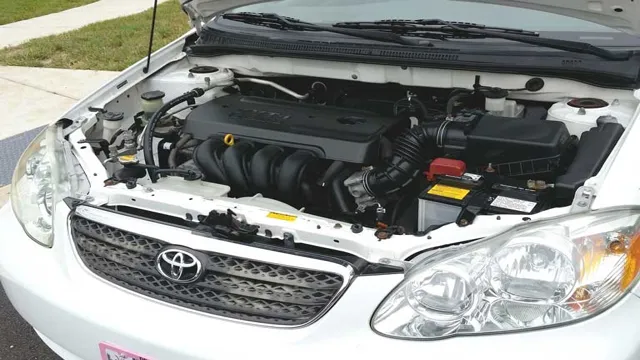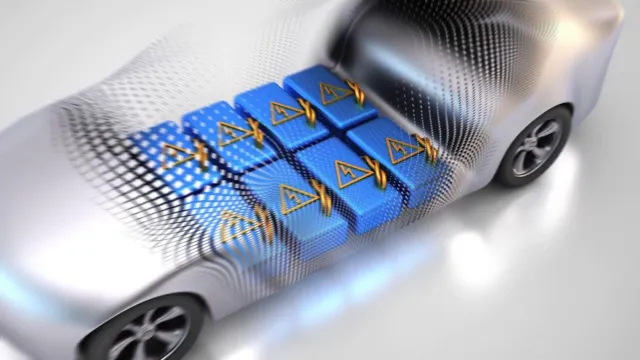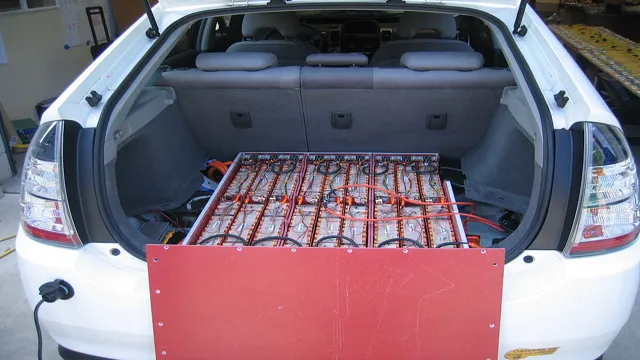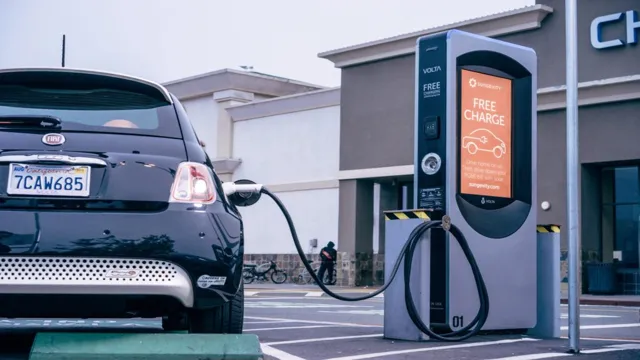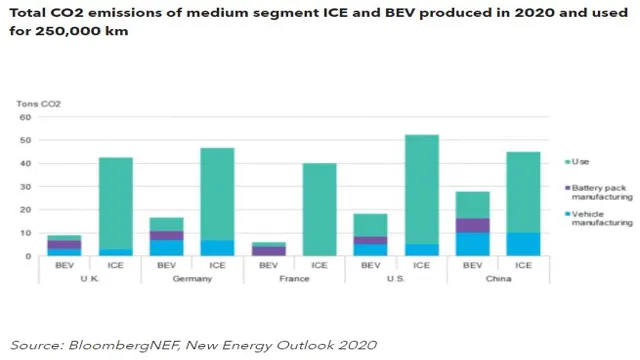Breaking Dependence: Exploring if the World Can Produce Electric Car Batteries without China
If you’re concerned about the reliance of electric car batteries on China, you’re not alone. With China currently producing over 70% of the world’s lithium-ion batteries, there’s understandable worry about supply chain disruptions, geopolitical tensions, and environmental concerns. However, the good news is that alternative sources of battery production are emerging outside of China.
From South Korea to Europe to the United States, there’s a growing push to diversify the battery market and establish more sustainable and localized supply chains. In this blog post, we’ll explore some of the companies and innovations that are making electric car batteries without China a reality. Let’s dive in!
Current Battery Trends
With the growing concern for the environment, the world is witnessing a greater shift towards electric cars. And as the demand for these cars increases, so does the need for a reliable and sustainable battery. However, as of now, China is dominating the global electric car battery market with 70% of the world’s production, making it hard for other countries to enter the market.
But that doesn’t mean it’s impossible. Countries like the US, Japan, and South Korea are already investing heavily in research and development to create their own electric car batteries. These batteries have the potential to be competitive not only in terms of quality but also in pricing.
So yes, the world can make an electric car battery without China, and with advancements in technology and greater investment in research, it’s only a matter of time before the rest of the world catches up.
China Dominates Battery Production
When it comes to battery production, China is currently dominating the industry. Approximately 73% of the world’s lithium-ion batteries are produced in China, with the country having a strong foothold on the global market. China’s dominance in battery production can be attributed to several factors such as government support, access to raw materials, and a large pool of skilled labor.
Additionally, the country’s production costs are much lower compared to other nations, making it an attractive destination for battery manufacturers. With the increasing demand for electric vehicles and energy storage systems, it is expected that China’s production of batteries will continue to grow, further cementing its position as a leader in the industry. As a result, other countries are looking for ways to catch up to China in battery production, but have a long way to go.
Risks of Dependence on China
As the world transitions towards renewable energy, the demand for batteries is skyrocketing. China has emerged as the dominant player in the battery industry, producing nearly two-thirds of the world’s lithium-ion batteries. While this has allowed for economies of scale and lower costs, it presents significant risks of dependence.
Any disruption in the supply chain from China could have a severe impact on the markets, especially for electric vehicles and stationary storage systems. However, the current battery trends show a shift towards localization, with several countries investing in their own battery manufacturing facilities. This shift aims to reduce dependence on China and secure the supply chain.
By creating a diversified and resilient battery supply chain, the risks of dependence on China can be reduced, providing a stable foundation for the growing renewable energy industry.
Alternative Sources of Battery Materials
Yes, it is possible for the world to make an electric car battery without relying on China. While China currently dominates the market for battery materials, such as lithium and cobalt, alternative sources are being investigated. For example, several companies are exploring the potential of mining for lithium in countries like Bolivia and Argentina, which have large lithium reserves.
Additionally, research is being conducted on developing new battery technologies that use alternative materials, such as sodium-ion and magnesium-ion batteries. These new technologies may not only reduce dependence on China but also provide cheaper and more sustainable options for battery production. However, it will take time for these alternatives to be fully developed and implemented on a large scale.
Nonetheless, the push for alternative sources of battery materials illustrates the importance of diversifying supply chains and reducing reliance on a single country.
Lithium Deposits Outside China
As we become increasingly reliant on battery-powered devices, the demand for materials like lithium continues to rise. Though China currently dominates global lithium production, there are alternative sources of this important battery component. For example, lithium deposits exist in countries like Australia, Chile, and Argentina.
These countries have been investing heavily in their mining industries to become players in the lithium market. Additionally, some companies are exploring new sources of lithium, such as brine deposits in Nevada. With the growing demand for batteries, it’s important to consider alternative sources of materials like lithium to ensure a stable supply chain is established.
As we search for sustainable, renewable energy solutions, it’s imperative that we find new ways to source the materials that power our world.
Opportunities in Recycling
As the world continues to move towards cleaner energy sources and more environmentally conscious practices, the demand for alternative sources of battery materials is growing. Recycling is one such opportunity, as it presents a way to collect and repurpose valuable materials that would otherwise end up in landfills. With electric vehicles becoming more common and the demand for batteries continuing to rise, recycling could be a game-changer in terms of sustainability.
Rather than relying solely on mining and extraction, recycling offers a way to reduce the environmental impact of battery production while also creating new business opportunities. By collecting materials from old batteries and processing them into new ones, we can reduce waste, conserve resources, and pave the way for a greener future.
Emerging Battery Technologies
As the world continues to shift towards renewable energy, the demand for batteries is constantly growing. However, traditional battery materials like lithium, cobalt, and nickel are limited resources that can be difficult to obtain. This is where alternative sources of battery materials come in.
One promising option is the use of seawater to extract lithium, which can be found in abundance. Another option is the use of sodium-ion batteries, which use sodium instead of lithium and can use materials that are more readily available. Additionally, researchers are exploring the use of organic compounds and even air as battery materials.
While these alternative sources are still in the early stages of development, they offer hope for a more sustainable and accessible future for battery technology.
Challenges and Potential Solutions
The electric car industry is booming, and as a result, there is a growing demand for high-quality and sustainable batteries. However, with China currently dominating the market, many are wondering if the rest of the world can catch up and develop their own battery production capabilities. The challenges that arise from this question are many.
First and foremost, developing a reliable and efficient battery is no easy feat, and requires significant research and development investments. Additionally, securing the necessary raw materials for battery production may prove to be difficult, as the vast majority of these materials are currently sourced from China. Despite these challenges, there are potential solutions to this problem.
One possible solution is to increase investment in battery research and development, with the goal of creating a more sustainable and affordable battery. Additionally, increasing the domestic production of raw materials could be beneficial, reducing reliance on foreign sources. Overall, while there are certainly challenges to developing an electric car battery without China, there are potential solutions that could make it possible in the future.
Cost and Scalability
When it comes to technology, cost and scalability are two major challenges that businesses and organizations have to tackle. As companies grow and expand, their needs become more complex, and their systems must be able to keep up. However, implementing new technology can be costly and sometimes prohibitive.
It’s crucial to find ways to balance the cost of technology with the need for scalability. One possible solution is to consider cloud-based solutions that allow for flexibility and less upfront costs. Another option is to prioritize and phase in technology projects to spread out costs over a more extended period.
Investing in training and development for employees to make the most of the systems can also help maximize scalability and reduce costs down the line. Ultimately, finding the right balance between cost and scalability is key to ensuring that business technology can meet the needs of the organization both now and in the future.
Investment in Research and Development
Investment in research and development is a key factor in driving growth and innovation. However, there are several challenges that can hinder progress in this area. One of the biggest challenges is funding.
Many businesses may not be able to invest enough money in research and development due to budget constraints or lack of access to financing. This can result in slower progress and less innovation. Another challenge is finding the right talent.
Finding and retaining skilled workers that can contribute to research and development efforts can be difficult and costly. Additionally, many companies may struggle with integrating research and development efforts with other business functions, such as marketing and sales. Despite these challenges, there are potential solutions that can help businesses overcome these barriers.
For example, companies can seek out government grants or collaborate with universities to access external funding. They can also invest in training and development programs to help grow a talented workforce. Creating a culture of innovation within the company can also help ensure that research and development efforts are consistently prioritized and integrated into the overall business strategy.
Conclusion: The Road Ahead
In conclusion, the world may have the technological prowess to make an electric car battery without China, but it’s unlikely to happen without global cooperation and investment in alternative materials and sources for battery production. China’s dominance in the industry should be seen as a wake-up call for other countries to prioritize the development of sustainable energy solutions. As the demand for electric vehicles continues to rise, the future of the industry will depend on our ability to find innovative solutions that benefit both the environment and the global economy.
So, let’s embrace the challenge and power up towards a battery-powered future together.”
FAQs
What percentage of the world’s electric car battery production comes from China?
As of 2021, China accounted for around 80% of the world’s electric car battery production.
Can electric car batteries be manufactured without using materials sourced from China?
Yes, it is possible, but it would require significant investments in research and development to find alternative materials and supply chains.
How does China’s dominance in electric car battery production affect the global market?
China’s dominance has given it significant market power, allowing it to control prices and potentially limit supply to other countries. This could pose risks for countries looking to electrify their transportation sectors.
What efforts are being made to reduce reliance on China for electric car batteries?
To reduce reliance on China, some countries are investing in building their own domestic battery industries, while others are partnering with companies outside of China. Additionally, there is a growing push for more sustainable and ethical sourcing of raw materials used in battery production.
